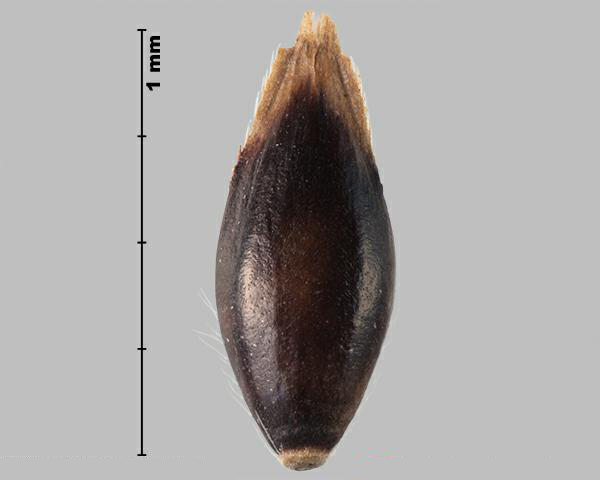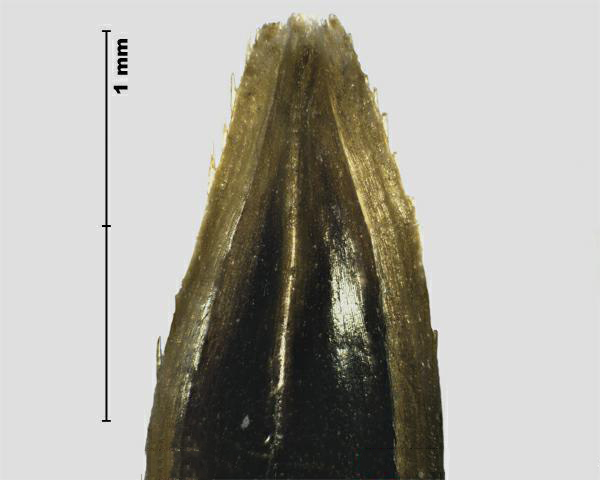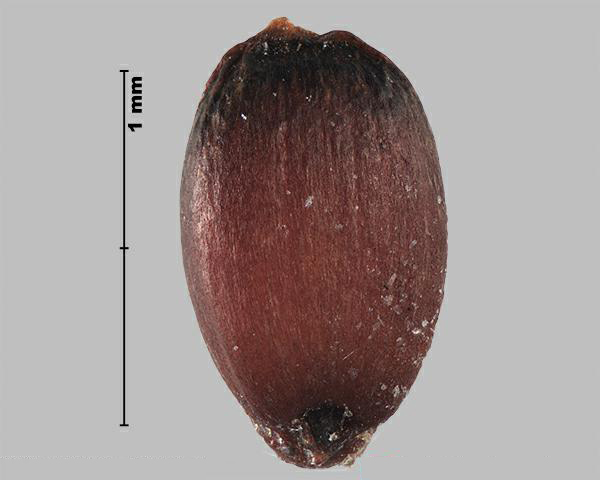Family
Poaceae
Common Name
Johnson grass
Regulation
Primary Noxious, Class 2 in the Canadian Weed Seeds Order, 2016 under the Seeds Act.
Distribution
Canadian: Present in ON (Brouillet et al. 2016Footnote 1).
Worldwide: Native range uncertain, possibly native to northern Africa and western and central Asia as far as India (Warwick and Black 1983Footnote 2, USDA-ARS 2016Footnote 3). Widely introduced elsewhere, including eastern Asia, North and South America, Europe, southern Africa, Australia and New Zealand (CABI 2016Footnote 4).
Duration of life cycle
Perennial
Seed or fruit type
Spikelet
Identification features
Size
- Spikelet length: 3.5 - 6.3 mm
- Spikelet width: 1.5 - 2.0 mm
- Caryopsis length: 2.5 -3.0 mm
- Caryopsis width: 1.5 mm
Shape
- Ovate-shaped spikelet with two stalks at the base and a pointed top
Surface Texture
- Glumes are smooth and shiny with teeth near the top
Colour
- Straw yellow at the tips of the glumes darkening to a reddish-purple at the base
- Pedicels are straw yellow
Other Features
- Papery, inert spikelets may be attached to the pedicels
- Can have light hairs around the pedicels and the base of the spikelet
- The caryopsis is obovate, reddish-coloured with a large embryo
Habitat and Crop Association
Cultivated fields, pastures, orchards, roadsides and disturbed areas (Darbyshire 2003Footnote 5, CABI 2016Footnote 4). A serious weed of many crops, notably cereals, corn, sorghum, soybeans, beans, cotton, rice, sugarcane, citrus and grapevine (CABI 2016Footnote 4).
General Information
Johnson grass was introduced into the southeastern United States as a forage crop in the early 19th century and then prompted weed control measures in the early 20th century (Warwick and Black 1983Footnote 2).
Johnson grass produces abundant seed (up to 28,000 seeds per plant) which are readily shed when mature and can be carried by wind or rain water (CABI 2016Footnote 4). Seeds can remain viable in the soil for at least seven years (CABI 2016Footnote 4). They also retain their viability after passing through the gut of animals such as birds or cattle (Warwick and Black 1983Footnote 2).
Similar species
Sudan grass (Sorghum bicolor subsp. drummondii)
- The spikelets of Sudan grass have a similar reddish-purple colour, oval shape, hard glumes and pedicels as Johnson grass.
- Sudan grass spikelets (length: 5.0 - 6.0 mm; width: 2.0 - 3.0 mm) are generally larger than Johnson grass, and the glumes of many spikelets are dark purple . The pedicels of Sudan grass do not have as well-developed cups at the ends as Johnson grass does.
Photos







Similar species

